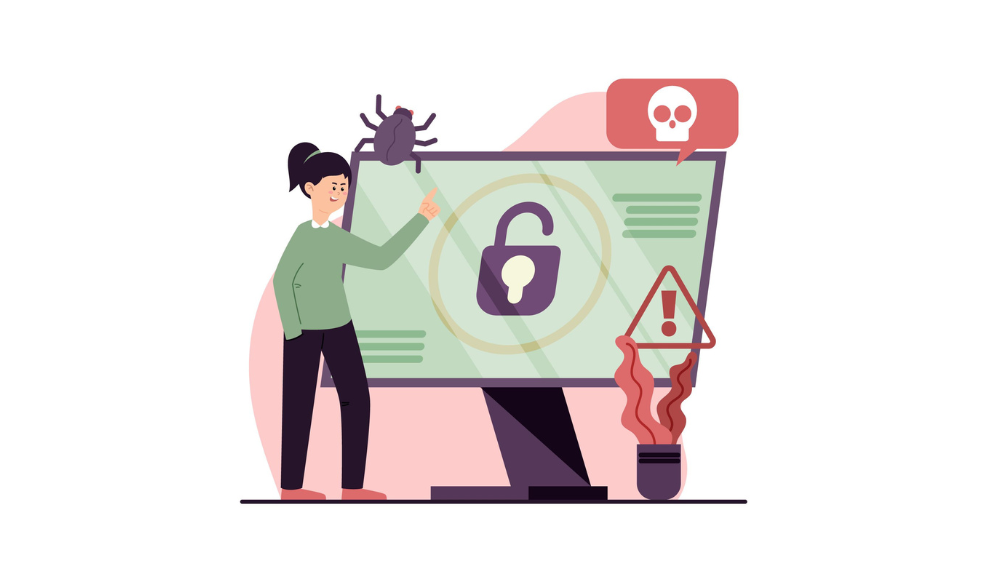Clickjacking: Understanding the Threat and How to Prevent It
Clickjacking, also referred to as UI redressing, is a type of web security threat that exploits user trust by tricking them into clicking on a hidden or disguised website element. While it may sound like a minor annoyance, the reality is far more dangerous. Clickjacking can lead to serious consequences such as data theft, unauthorized financial transactions, and even system compromise.
What Is Clickjacking?
Clickjacking is a malicious technique where an attacker manipulates a user into clicking on a hidden or misleading element on a website. The term “clickjacking” is a combination of “click” and “hijacking,” accurately describing how the attacker takes control of a user’s actions without their knowledge.
By overlaying an invisible or disguised button over a legitimate one, users may think they are performing a safe action but are triggering something harmful, like sharing sensitive data or performing unauthorized tasks.
This kind of attack often goes unnoticed by the victim, as it uses the website’s legitimate appearance to deceive them. Common examples include invisible frames (iframes) placed over website buttons or using social engineering to trick users into clicking elements they wouldn’t normally interact with.
How Clickjacking Attacks Work
In a typical clickjacking attack, the attacker creates a malicious webpage that loads another site (the target) within an invisible iframe. The attacker’s site might display a button that the user thinks is harmless, such as “Play Video” or “Download File.” In reality, clicking this button triggers an action on the hidden iframe, like making a purchase, submitting personal information, or changing account settings.
Here’s a simple example: a user visits a page to watch a video, but instead of clicking “Play,” they are unknowingly clicking “Transfer Funds” from their bank account. The true target of their click was hidden beneath the visible element.
Learn More About Comprehensive Cybersecurity Solutions
The Impact of Clickjacking
The consequences of clickjacking can be severe. From individual users to large corporations, the damage caused by a clickjacking attack can be widespread. Some of the potential impacts include:
- Unauthorized Transactions: Users can be tricked into transferring funds or making purchases without their consent.
- Data Breaches: Sensitive information like passwords, credit card numbers, or personal details may be exposed or stolen.
- Security Settings Manipulation: Attackers can change security settings or login credentials, giving them unauthorized access to systems.
- Compromised Accounts: Clickjacking can lead to hijacked accounts, causing reputational and financial damage for both individuals and businesses.
For businesses, the effects of clickjacking are particularly damaging. It can erode customer trust, lead to financial losses, and even result in legal action if the company is found negligent in securing its web applications.
Click Here to Meet Our VAPT Expert for Free Assistance!
Key Causes of Clickjacking
To effectively prevent clickjacking, it’s essential to understand what enables these attacks. Common causes include:
- Absence of X-Frame-Options Header: Websites without the X-Frame-Options header are particularly vulnerable. This header prevents pages from being embedded in iframes on unauthorized websites.
- Browser Vulnerabilities: Some outdated browsers lack protection against clickjacking, allowing attackers to exploit this weakness.
- Poor User Interface Design: Websites that don’t require additional verification (like CAPTCHA or confirmation prompts) for critical actions are more susceptible to clickjacking.
- Iframe Misuse: Attackers can exploit sites that allow unrestricted use of iframes, embedding malicious content on trustworthy pages.
How to Prevent Clickjacking
 Luckily, there are several strategies that website owners and developers can employ to prevent clickjacking attacks and protect their users. Some of the most effective solutions include implementing proper security headers, securing user interfaces, and educating users on the risks involved.
Luckily, there are several strategies that website owners and developers can employ to prevent clickjacking attacks and protect their users. Some of the most effective solutions include implementing proper security headers, securing user interfaces, and educating users on the risks involved.
- Implementing the X-Frame-Options Header
One of the most effective ways to combat clickjacking is to implement the X-Frame-Options header. This HTTP response header allows you to control whether your web pages can be embedded within an iframe on other websites. The three values that you can set for X-Frame-Options are:
– DENY: Completely prevents your page from being displayed in an iframe, anywhere.
– SAMEORIGIN: Allows your page to be displayed in an iframe, but only on pages from the same domain.
– ALLOW-FROM: Enables you to specify trusted URLs that are allowed to embed your content.
By using the X-Frame-Options header, you effectively block attackers from embedding your content in a malicious iframe and stop clickjacking attacks in their tracks.
- Adopting a Content Security Policy (CSP)
Another powerful tool in the fight against clickjacking is a Content Security Policy (CSP). The CSP header helps prevent a wide range of attacks, including clickjacking, by controlling which resources (like scripts or iframes) can be loaded on a web page.
To mitigate clickjacking, you can use the frame-ancestors directive within your CSP, specifying which domains are allowed to embed your content in an iframe. If no external domains are trusted, you can restrict embedding entirely.
For instance:
Content-Security-Policy: frame-ancestors ‘self’
This ensures that only your website can embed its content, blocking clickjacking attempts from any external site.
Schedule a Meeting to Learn More About Our 24/7 Security Operations Center
- Securing User Interfaces
While headers like X-Frame-Options and CSP are crucial for preventing clickjacking, they should be complemented by secure user interface (UI) design. Implementing additional security features for critical actions on your website can go a long way toward reducing the risk of clickjacking.
Some best practices include:
– Using CAPTCHA challenges for critical actions, like financial transactions or account changes, to ensure that a real user is performing the action.
– Implementing multi-step verification for sensitive tasks, such as two-factor authentication for logins.
– Including confirmation prompts for actions that have significant consequences, like making purchases or changing security settings.
By securing your UI, you make it harder for attackers to trick users into unintended actions.
- Disabling Iframes on Vulnerable Pages
Some pages, such as login forms or those dealing with sensitive data, are particularly vulnerable to clickjacking. For these pages, it’s a good idea to completely disable the use of iframes. This can be achieved by setting the X-Frame-Options header or by configuring your HTML to prevent embedding.
By disabling iframes on critical pages, you remove the potential for attackers to disguise malicious elements within a seemingly legitimate page, protecting your users from accidental clicks.

- User Education and Awareness
While technical defenses are vital, educating your users about the risks of clickjacking is equally important. Many clickjacking attacks rely on social engineering, tricking users into believing they are performing legitimate actions.
Provide users with clear guidelines on how to recognize suspicious behavior. For example:
– Warn users about the risks of interacting with unfamiliar websites or buttons.
– Encourage them to verify the legitimacy of websites before entering personal information.
– Inform them about common clickjacking tactics and how they can protect themselves.
By raising awareness, users can become more cautious and avoid falling victim to clickjacking.
Discover Essential Clickjacking Insights Here Now
Conclusion: Protecting Against Clickjacking
Clickjacking remains a serious web security threat, but with the right strategies, you can protect your website and your users from harm. By implementing measures like the X-Frame-Options header, adopting a Content Security Policy, securing your user interfaces, and educating users, you can significantly reduce the risk of clickjacking.
In today’s digital landscape, where cyberattacks are becoming more sophisticated, it’s more important than ever to ensure that your website is fortified against threats like clickjacking. Taking proactive steps will not only protect your business from potential financial and reputational damage but also help build trust with your users, knowing their safety is your top priority.
